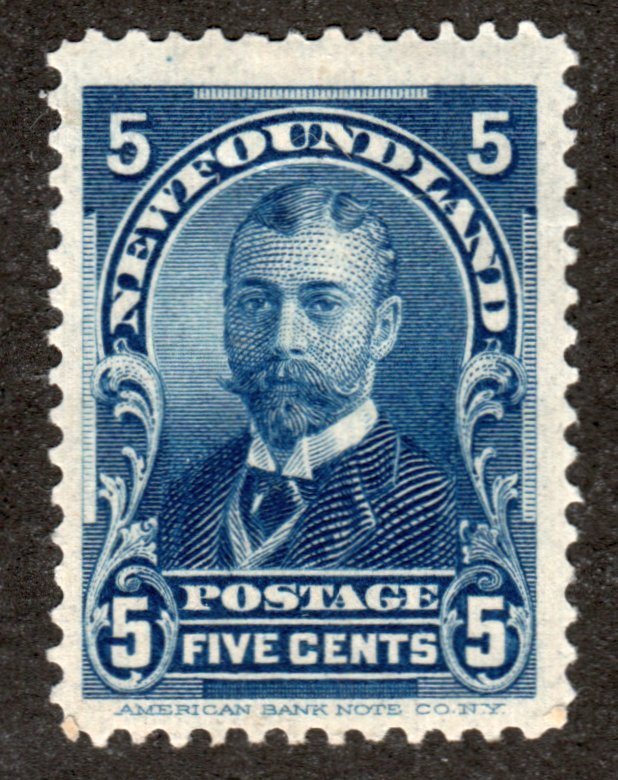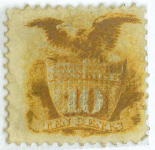
Discussion - Member to Member Sales - Research Center

Discussion - Member to Member Sales - Research Center

Cream and white papers and Helecon paper and Helecon ink papers. In a video that I will be making soon will show how Helecon paper and Helicon ink paper illuminates in the dark under a UV light.
Watermark and no watermark as well as inverted watermarks; surcharge and Specimen overprints and perfins (perforated initials/insignia) which were to discourage theft of the stamps in the workplace, including government official were prone to pilfering stamps for personal use.
Perfs are also sometimes called SPIFS (Stamps Perforated with Initials of Firms and Societies)
Helecon ink was only used on the 5d QEII red. All other stamps used Helecon coated paper. However, it is this issue, and primarily it's change in colour from green to red that gives the game away.
The 5d red was the defining moment when all Australian postage changed to Helecon. There has always been some confusion with these green/red varieties with/without Helecon ink/paper. The bottom line is that, red stamps, coils and booklets contain Helecon ink, green stamps and booklets (there were no coils) contain no Helecon.
In 1965 beginning with the Churchill Commemorative (Chambon), all Australian issues were transferred to papers having Helecon in the paper, or in the ink. This issue saw the introduction of Helecon paper rolls supplied especially for the Chambon press, and finalised the changeover for all Australian Stamps.
I will soon make a video showing the illumination of Helecon paper and Helecon ink showing the contrast in both.
Thin & Thick paper of the 10/- Coronation "Robes".

The thin paper has a transparency, the thin paper absorbs more ink giving the design on the thin paper a darker appearance.
Thick & Thin paper of the 10/- Coronation "Robes" Specimens, showing the deeper ink of the thin paper compared to the light ink on the thick paper on the left.

Thick on the left, thin on the right.

The design (left) is very transparent to the gummed side of the stamp.
Same stamps from the front showing the much deeper colour of the very thin paper (right). Such papers and depending on the type of stamp are classified from scarce to rare.

Another very thin paper issue (very thin stamp on the right in comparison to normal paper of the same type on left).

Very thin paper on the right (pelure also known as onion skin").

Very thin stamp on the right in comparison to normal paper of the same type on left.
In Part II, I will discuss about tinted, aniline, cream and white papers.

6 Members
like this post.
Login to Like.
I am pretty sure I have a pair of the 5 Shilling stamps which are thin paper. I measured them with a micrometer, but not sure that is the best way to do that.

Login to Like
this post
"I am pretty sure I have a pair of the 5 Shilling stamps which are thin paper. I measured them with a micrometer, but not sure that is the best way to do that."
Hi smauggie.
To measure the thickness of the stamp with a micrometer, it says in the ACSC (Australian Commonwealth Specialist's Catalogue (2015):
Thin Paper. Normal paper thickness (including gum) can be considered to vary between 0.083mm and 0.091mm. The thin paper varieties generally gauge between 0.070mm and 0.075mm.
If one understands the micrometer (I have a digital version), it is very accurate, but the easiest way to identify a thin paper of the "robes" in your case the 5/- Elizabeth is the same as the 10/- version.
The darker of the two is the thin paper variety

I reversed the image to put into perspective the back of the stamps to the front. You can see the subtle difference between thick and thin 5/- "Robes".

Robert

Login to Like
this post
They are pretty clear differences once you know what to look for.

Login to Like
this post
Yes they are. I forgot to mention offsets so I added it into my original thread.

Login to Like
this post
Member ACCC (Australian Commonwealth Collectors Club of NSW)
20 Jun 2016
01:31:51pm
There have been many papers used in the production of Australian stamps such as thin and thick paper, thin and very thin paper (pelure also known as “onionskin), tinted and aniline papers and offsets.
Cream and white papers and Helecon paper and Helecon ink papers. In a video that I will be making soon will show how Helecon paper and Helicon ink paper illuminates in the dark under a UV light.
Watermark and no watermark as well as inverted watermarks; surcharge and Specimen overprints and perfins (perforated initials/insignia) which were to discourage theft of the stamps in the workplace, including government official were prone to pilfering stamps for personal use.
Perfs are also sometimes called SPIFS (Stamps Perforated with Initials of Firms and Societies)
Helecon ink was only used on the 5d QEII red. All other stamps used Helecon coated paper. However, it is this issue, and primarily it's change in colour from green to red that gives the game away.
The 5d red was the defining moment when all Australian postage changed to Helecon. There has always been some confusion with these green/red varieties with/without Helecon ink/paper. The bottom line is that, red stamps, coils and booklets contain Helecon ink, green stamps and booklets (there were no coils) contain no Helecon.
In 1965 beginning with the Churchill Commemorative (Chambon), all Australian issues were transferred to papers having Helecon in the paper, or in the ink. This issue saw the introduction of Helecon paper rolls supplied especially for the Chambon press, and finalised the changeover for all Australian Stamps.
I will soon make a video showing the illumination of Helecon paper and Helecon ink showing the contrast in both.
Thin & Thick paper of the 10/- Coronation "Robes".

The thin paper has a transparency, the thin paper absorbs more ink giving the design on the thin paper a darker appearance.
Thick & Thin paper of the 10/- Coronation "Robes" Specimens, showing the deeper ink of the thin paper compared to the light ink on the thick paper on the left.

Thick on the left, thin on the right.

The design (left) is very transparent to the gummed side of the stamp.
Same stamps from the front showing the much deeper colour of the very thin paper (right). Such papers and depending on the type of stamp are classified from scarce to rare.

Another very thin paper issue (very thin stamp on the right in comparison to normal paper of the same type on left).

Very thin paper on the right (pelure also known as onion skin").

Very thin stamp on the right in comparison to normal paper of the same type on left.
In Part II, I will discuss about tinted, aniline, cream and white papers.

6 Members
like this post.
Login to Like.

re: Part I. Different Papers used in Australian Postage Stamps
I am pretty sure I have a pair of the 5 Shilling stamps which are thin paper. I measured them with a micrometer, but not sure that is the best way to do that.

Login to Like
this post
Member ACCC (Australian Commonwealth Collectors Club of NSW)
20 Jun 2016
03:56:10pm
re: Part I. Different Papers used in Australian Postage Stamps
"I am pretty sure I have a pair of the 5 Shilling stamps which are thin paper. I measured them with a micrometer, but not sure that is the best way to do that."
Hi smauggie.
To measure the thickness of the stamp with a micrometer, it says in the ACSC (Australian Commonwealth Specialist's Catalogue (2015):
Thin Paper. Normal paper thickness (including gum) can be considered to vary between 0.083mm and 0.091mm. The thin paper varieties generally gauge between 0.070mm and 0.075mm.
If one understands the micrometer (I have a digital version), it is very accurate, but the easiest way to identify a thin paper of the "robes" in your case the 5/- Elizabeth is the same as the 10/- version.
The darker of the two is the thin paper variety

I reversed the image to put into perspective the back of the stamps to the front. You can see the subtle difference between thick and thin 5/- "Robes".

Robert

Login to Like
this post

re: Part I. Different Papers used in Australian Postage Stamps
They are pretty clear differences once you know what to look for.

Login to Like
this post
Member ACCC (Australian Commonwealth Collectors Club of NSW)
20 Jun 2016
07:50:47pm
re: Part I. Different Papers used in Australian Postage Stamps
Yes they are. I forgot to mention offsets so I added it into my original thread.

Login to Like
this post


